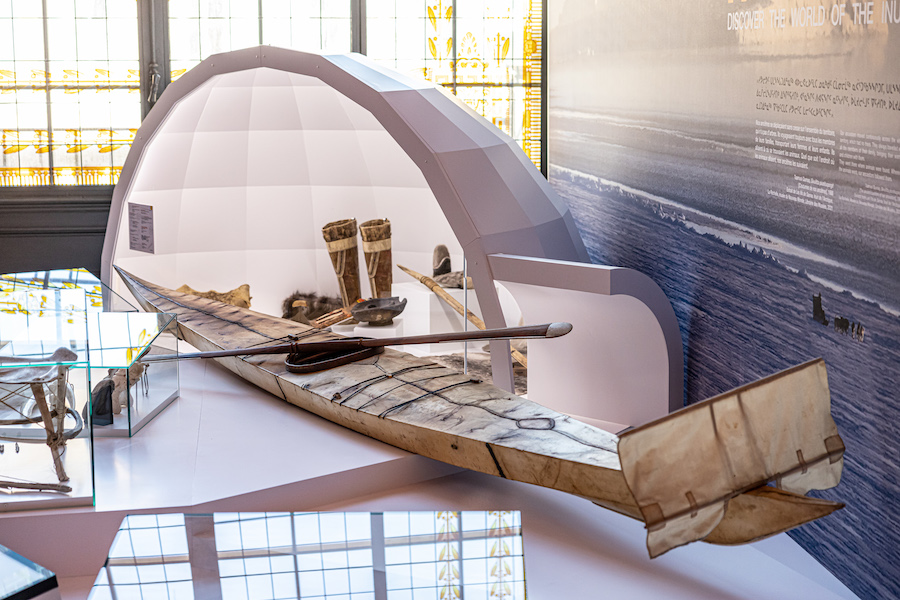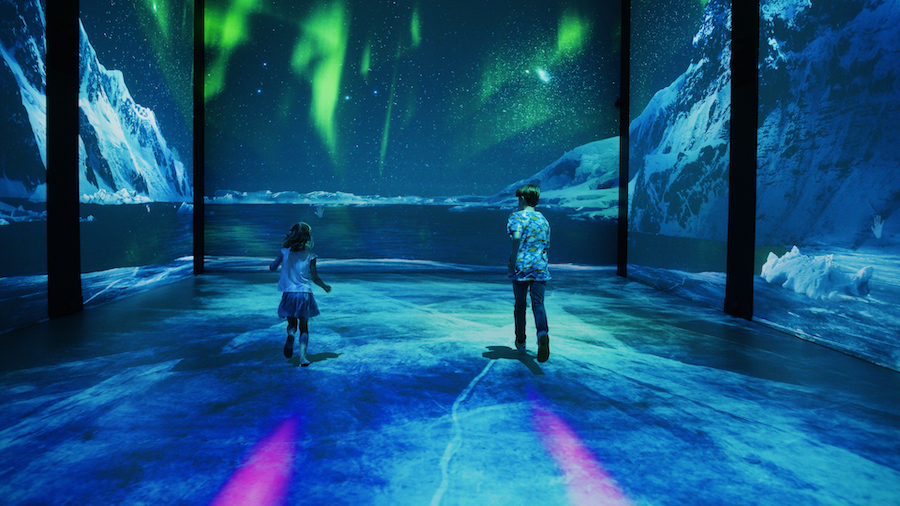The Oceanographic Museum has unveiled its major new exhibit for the next two years, an immersive experience to the polar regions where visitors are able to discover the beauty, the fragility, and the hope that lies within.
For the next two years, visitors to the Oceanographic Museum can discover the sometimes forbidding, but incredibly fragile, polar regions of our planet. With the inauguration of Polar Mission on Thursday 2nd June, the public can now delve into this crystalline world and learn all about the Arctic and Antarctic from a new perspective.
Through this new major exhibition, the Oceanographic Museum first offers a “one-on-one” journey with polar explorers Jean Malaurie, Frederik Paulsen, Jean-Baptiste Charcot and Matthew Henson, retracing their discoveries, reproducing a polar environment, and showing what a traditional igloo is like.
The objective is to allow visitors to learn more about the way of life of the Inuits and their traditions.

The exhibition then moves through four more spaces to create a real immersion in these remote regions of the globe.
“It is my hope that the emotion aroused by the beauty of the polar regions, together with the awareness of the vital role they play on a global scale, will lead mankind to regard them with respect and caution,” said Prince Albert, “because one thing of which we are now certain is that the future of the poles foreshadows our own.”
In space number three, the challenge is to unlock the secrets of the North and South Poles; not only to understand how they function, but also to realise what tremendous upheavals are taking place there because of climate change. It offers visitors an opportunity to become fully aware of the differences between these two extremes and the crucial role played by them in the planet’s climate balance.
In space number four, visitors physically feel as if they are at the Poles. The wild, grandiose beauty of those icy lands comes to life in a never-before-seen immersive, interactive projection featuring bears, seals, beluga whales, whales, sea elephants, killer whales and penguins. It is a wonderland which culminates in the dreamlike polar aurora, while an audio projection relays the fragility of this ecosystem, and the dangers which threaten these species.
Finally, space number five reveals how far the knowledge of global warming and its consequences have come, how it is impacting biodiversity, and how it is impacting humans.

With the help of an entrance ticket in the form of a press card, the “visitor-reporter” can activate extra content and, at the end of their visit, hand over their report using an interactive terminal. They are also invited, if they so wish, to pledge their support to the Oceanographic Institute and the Prince Albert II of Monaco Foundation by actively backing measures in favour of the poles, most notably the creation of new Marine Protected Areas in the polar oceans.
“Ecology is a subject that concerns all of humanity,” Mélanie Laurent, who is ambassador of the new exhibition, said.
Explorer Jean-Louis Etienne, who was also on hand, added, “The poles are the lungs of the Earth, their role is essential. They are the main carbon sinks on the planet. They regulate the climate.”
Mathieu Ferragut, CEO of CFM-Indosuez, the main sponsor of the exhibit, concluded by saying that finance is necessary for sustainable development. The bank has been a partner with the museum since January 2020 and has also offered its clients sustainable project inclusion in support of the institution in lieu of fees, which last year contributed €171,000 to the museum.
Photo © Musée océanographique
